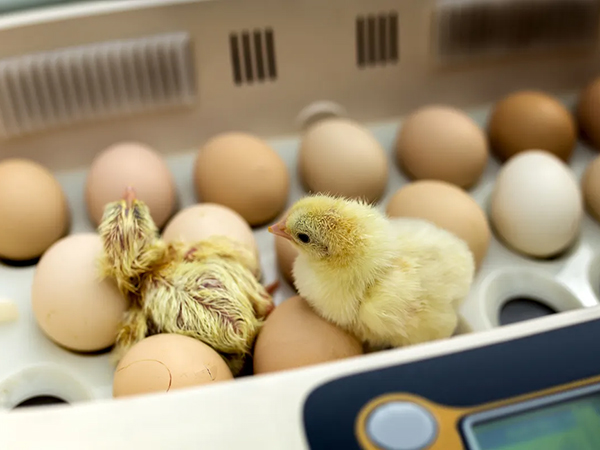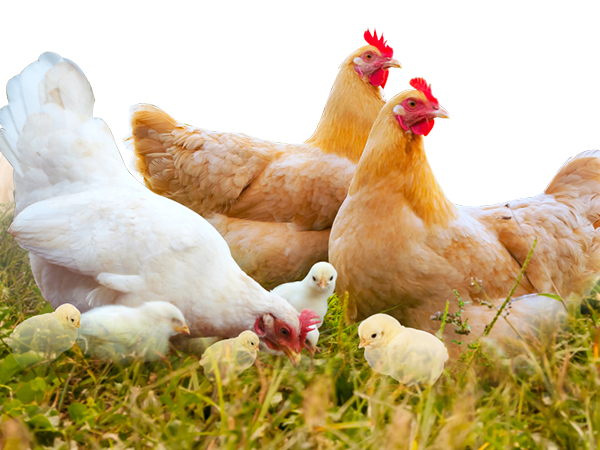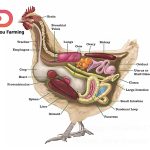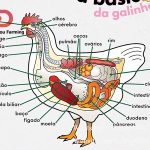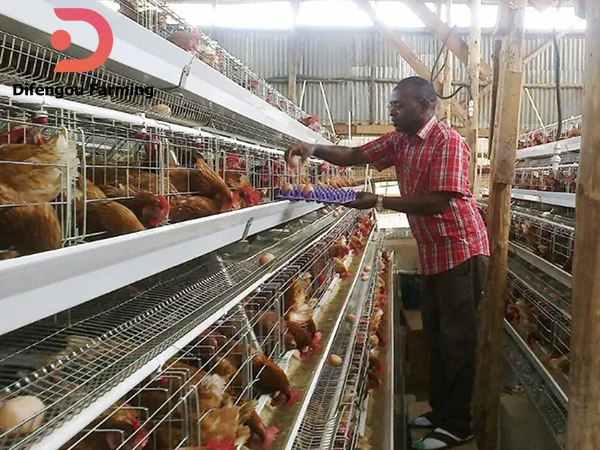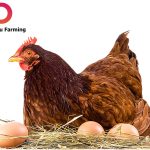The Growth Pattern of Layer chickens and Broiler Chickens
The Growth Pattern of Layer chickens and Broiler Chickens
The growth of chickens is characterized by weight gain and physical growth. This article mainly discusses the growth pattern of chickens from the perspective of weight gain.
(1) The Growth Pattern of Layer Chickens
Compared with broiler chickens, layer chickens have a longer growth cycle and production period. According to their physiological status, the life of layer chickens is divided into four stages: young chicks (0-6 weeks old), middle chicks (7-14 weeks old), large chicks (15-20 weeks old), and laying. According to the feeding period, they are divided into: brooding period (0-6 weeks old), growing period (7-20 weeks old), and laying period (21-72 weeks old). Currently, in layer chicken farms with very good feeding and management, some flocks have extended their laying period to over 85 weeks and are still profitable. It can be seen how important it is to master the growth pattern of chickens for feeding chickens well.
0-6 weeks is the period of the fastest growth and development of layer chickens. It is also the period of the focus on the growth of bones and internal organs. After 10 weeks of age, the growth rate slows down. Chicks with a heavier weight at 5 weeks of age have better future laying performance.
The uniformity of 16-week-old chickens is very important. Uniformity refers to the size of the individual differences in body weight, physical fitness, and fatness (fatness) among chickens in a flock. If the difference is small (close to the group average), the uniformity of the flock is good; if the difference is large, the uniformity is poor. A flock with good uniformity indicates that the chickens are well-developed. Such flocks have similar laying dates, high peak egg production rate, long maintenance time, and few culling and deaths of hens during the laying period.
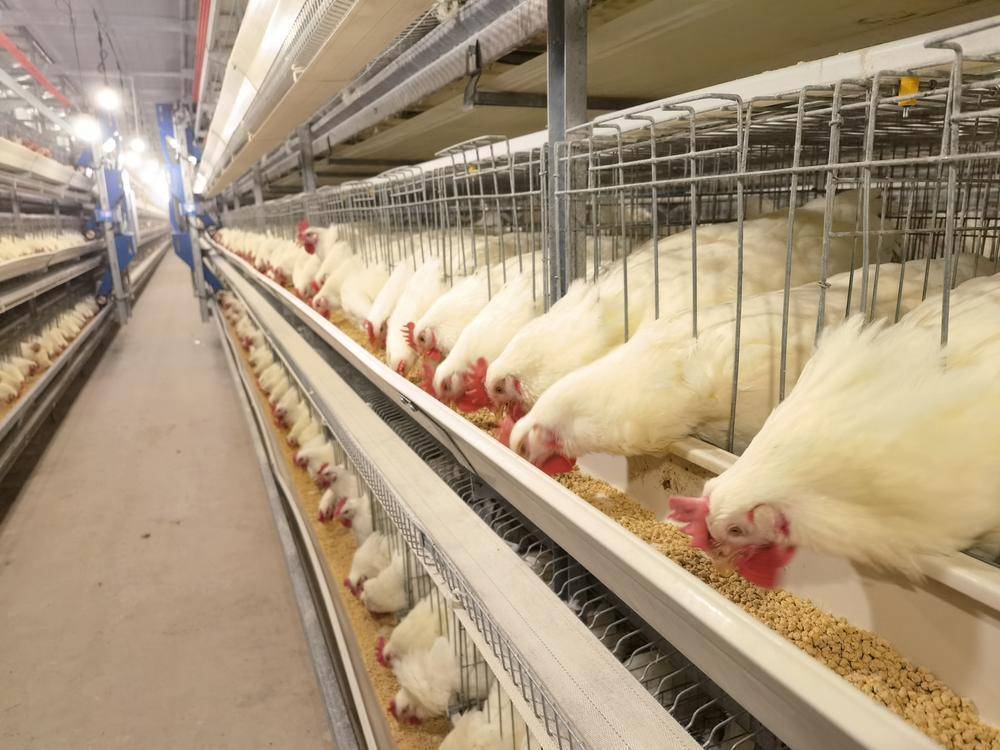
According to observation, the growth of internal organs is basically synchronized with the increase in body weight. The growth rate of mature chickens has decreased, but the overall growth is still rapid, and the growth and development of various organs are gradually becoming healthy. The digestive system grows rapidly, the digestive ability is enhanced, and the feed intake increases. The growing period is the period of the most bone growth and muscle growth. For example, the length and weight of the tibia of 6-week-old chicks are about 61% and 24% of those at 20 weeks old, respectively. By 10 weeks of age, they have increased to about 82% and 47%, respectively. In fact, the bones have been fully developed at 10 weeks of age and have little weight gain. The body fat of chickens gradually accumulates with increasing age. Therefore, it is necessary to control the weight of chickens in the middle and late stages of growing, so as to avoid obesity.
In the middle and late stages of growing, the reproductive system of the hen develops rapidly, and a few hens have reached sexual maturity (start laying eggs). The ovaries and oviducts of layer chickens begin to grow and develop from 11 weeks of age, accelerate at 16 weeks of age, and reach a peak around 19 weeks of age. The average weight of the ovaries of newborn pullets is 0.03 grams; the length of the ovaries of immature hens is about 15 mm and the width is about 5 mm; while at the beginning of sexual maturity, the weight of the ovaries increases to 40-60 grams. The length of the oviduct in the resting period (when not laying eggs) is 15.4 cm; it becomes 65-81 cm in the laying period, and the weight is about 41.5 grams. In the early laying period, the weight of the hen needs to increase by 400-500 grams, of which 40%-70% is the weight gain of the reproductive system; the bones increase by 15-20 grams, and 4-5 grams are calcium reserves. With the growth and development of the reproductive system, the heart, liver, etc. also increase (some data show that the liver of hens increases by 100% in the 3-4 weeks before laying eggs). The growth of internal organs serves the vigorous metabolism of hens after laying.
The Growth Pattern of Broiler Chickens
The purpose of raising meat-type chickens is to provide broilers. Modern broilers are crossbred chickens produced by meat-type breeding lines. Broilers are chickens that are about 8 weeks old and weigh no more than 1.5 kilograms. Broilers that are 9-12 weeks old and weigh 1.8 kilograms are called fryers; broilers that are 4-6 months old and weigh 2.95-3.6 kilograms are called roasters.
The rearing period of meat-type chickens is shorter than that of egg chickens, and the difficulty of rearing is also higher than that of egg chickens. This is because the weight of broiler chickens is difficult to control and is prone to obesity. Overweight roosters are prone to leg diseases, which not only affect mating, but also affect the fertilization rate of breeding eggs; overweight hens have low egg production, are prone to prolapse, and have increased mortality and culling during the laying period. Therefore, if the weight of broiler chickens is not controlled properly, it will affect their breeding effect and reduce economic benefits. Researchers have done a lot of research on the growth pattern of broilers, and there are many reports. Understanding and mastering these laws is a prerequisite for raising broilers well.
The growth of broiler weight
In the early 20th century, people found that 8 weeks of age was a turning point in the relative growth rate of the growing period and the entire growth process. Before that, the growth was rapid, and then the growth slowed down. Guan Zhen and Chen Hongsheng (1984) concluded through the study of the early growth pattern and growth advantages of crossbred yellow-feathered broilers that the weight at 4 weeks can be used to estimate the weight at 8 weeks. That is, the chicken flock or individual with fast weight gain at 4 weeks of age will also have a larger weight at 8 weeks of age. The maximum absolute weight gain of all types of chicken breeds is at 6 weeks of age. The analysis of variance (to test the degree of difference between the groups under test, that is, whether the difference is significant or not) shows that there is no difference in the relative growth rate of all types of chicken breeds after 5-6 weeks of age. Their differences are mainly before 4 weeks of age, at this time, the growth trend of crossbred chickens is similar to that of meat chickens.
In order to facilitate the reference of broiler feeding and broiler feeding, the data on relative weight gain, absolute weight gain and feed conversion rate are now summarized as follows (quoted from Yang Ning’s “Modern Chicken Production” in 1993).
| Age Week | 1 | 2 | 3 | 4 | 5 | 6 | 7 | 8 | 9 |
| relative weight % | 275 | 163 | 76 | 53 | 37 | 29 | 39 | 19 | 15 |
Relative weight gain = (end weight – initial weight) / initial weight x 100%. For example, the initial weight of a broiler is about 40 grams, and the weight at the end of 1 week increases to 150 grams. Then the relative weight gain rate is: (150-40) / 40 x 100% = 275%. Chickens are calculated by weeks, that is, how many times the weight has increased by the end of the week compared to the previous weekend. From the calculation, it can be seen that the weight at the end of the first week has increased by 2.75 times (speed of 275%). This indicator reflects the speed of chicken growth in a certain stage, while absolute weight gain reflects the direct weight gain effect.
Absolute weight gain = end weight – initial weight. According to the above example, the calculation is: 150-40 = 110 grams, that is, the absolute weight gain of each chicken from birth to the first weekend is 110 grams.
Broiler weight gain
| Age Week | 1 | 2 | 3 | 4 | 5 | 6 | 7 | 8 | 9 | 10 |
| Rooster weight gain | 110 | 260 | 310 | 400 | 420 | 470 | 510 | 500 | 480 | 460 |
| Hen weight gain | 110 | 230 | 290 | 330 | 370 | 390 | 400 | 380 | 350 | 310 |
| Average weight gain | 110 | 245 | 300 | 365 | 395 | 430 | 455 | 440 | 415 | 365 |
Broiler feed conversion rate
| Age week | 1 | 2 | 3 | 4 | 5 | 6 | 7 | 8 | 9 | 10 |
| Weekly Conversion Rate | 0.8 | 1.21 | 1.49 | 1.74 | 2.03 | 2.32 | 2.63 | 2.99 | 3.39 | 3.84 |
| Cumulative conversion rate | 0.8 | 1.05 | 1.24 | 1.41 | 1.58 | 1.75 | 1.92 | 2.09 | 2.26 | 2.43 |
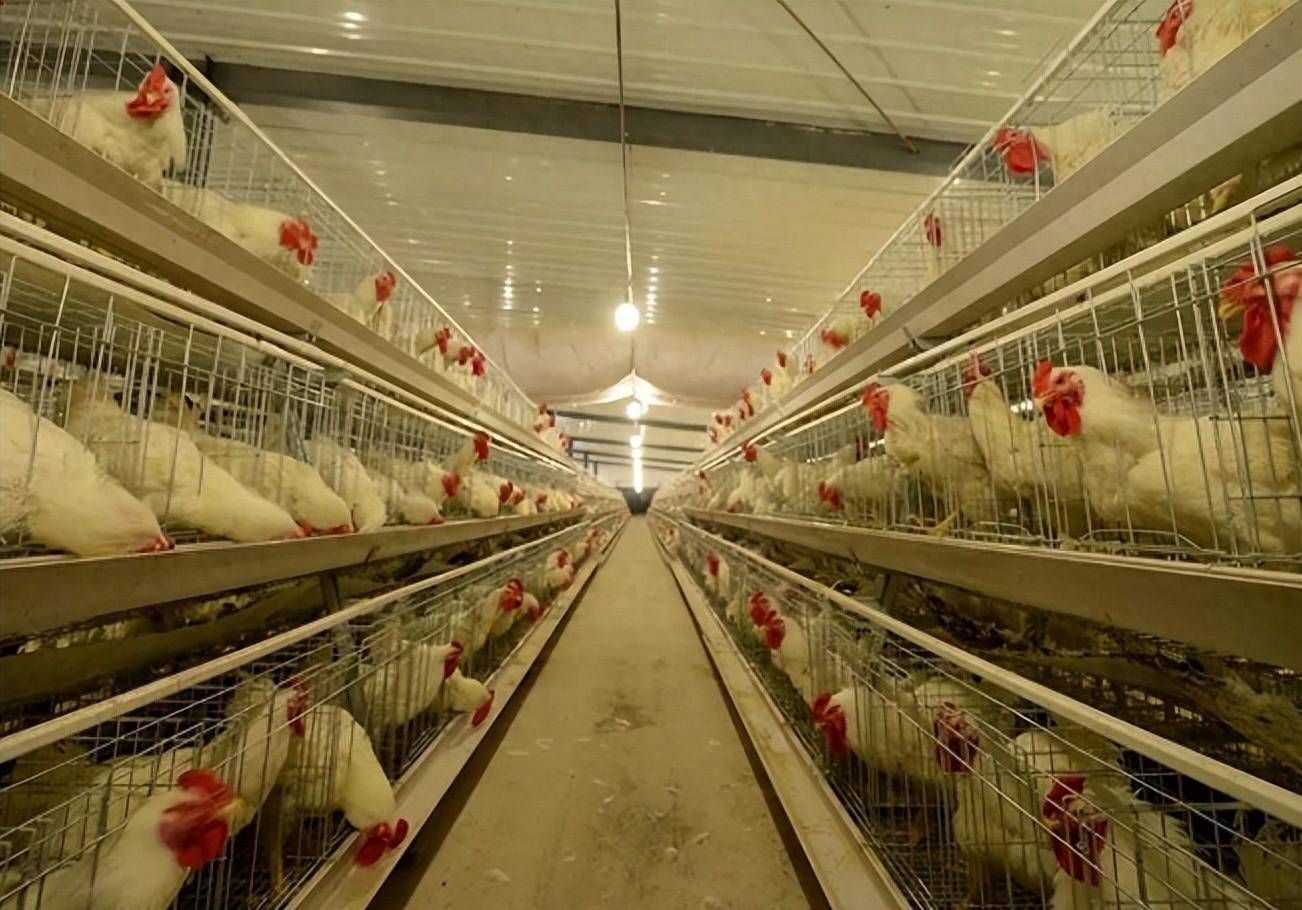
From the above two tables, it can be seen that the feed intake per unit weight gain increases with the increase in the age of broiler chickens. Especially after 8 weeks of age, the absolute weight gain decreases, the feed intake continues to increase, and the feed conversion efficiency significantly decreases.
Poultry ecological adaptability selection has always been one of the main goals of breeding. Any species arriving in a new environment must undergo a series of changes, including developing disease resistance and adaptability. Those that adapt to the new environment will survive, while those that do not will naturally be eliminated.
There is a negative correlation between early growth of broiler chickens, their vitality, and their immune performance. This means that the faster broiler chickens grow early on, the more their vitality and immune performance may be affected.
The study by Dong et al. (1991) on the ecological adaptability of the Jingxing broiler hybrid D line found that the early growth of broiler chickens and their vitality showed a negative genetic correlation (correlation coefficient of -0.16). This means that it is difficult to improve the growth rate and vitality of broiler chickens at the same time. In other words, the vitality and adaptability of fast-growing broiler chickens may be affected to a certain extent.
Zhang Wensheng (1997) pointed out in an article titled “Progress in Chicken Immunogenetics Research” that many experiments have shown that chicken immunity is negatively correlated with weight. The research by Havenstein and M.A.Qureshi et al. (1994) showed that the immune performance of modern broiler chickens decreases with the increase in growth rate and nutritional level (immunity performance can be understood as resistance, disease resistance, and the strength of vitality).
The negative correlation between early growth, vitality, and chicken immunity and weight, as mentioned above, is not only a challenge for broiler breeding, but also a problem worth paying attention to in feeding and management. Broiler farmers should be aware of this and avoid blindly pursuing growth rate during feeding, especially when conditions are relatively poor. The details and important aspects will be introduced in the relevant chapters later.
Growth pattern of internal organs in broiler chickens
In their study of the growth stages of modern broiler chickens, Liu Yulong et al. (1994) also found that the organ with the fastest growth rate is the digestive tract, followed by the internal organs (heart, liver, spleen, kidneys, and pancreas), skeletal muscle, bones, skin, and feathers. The order in which each organ reaches 60% of its weight at 20 weeks of age is as follows: brain (growth is basically complete at the end of 4 weeks of age), supraorbital sac, digestive tract, internal organs, bones, muscles, skin, and feathers. This order shows the rule of priority growth of important organs. The length of internal organs and the digestive tract changes synchronously with body weight, and presents a certain regularity. Fang Beitang et al. (1997) measured the order in which the weight of each organ of 5-week-old broilers reached 60% of its weight at 7 weeks, indicating that the heart, liver, pancreas, and digestive tract grow faster, while the spleen and kidneys grow slower. Internal organs are the basic “facilities” of animal life, and their growth and development are of great importance
The digestive tract canal portion (esophagus, glandular stomach, duodenum, jejunum, ileum, and rectum) grows relatively steadily, reaching 60% of its length at 7 weeks in the following order: duodenum (1 week), rectum (2 weeks), glandular stomach, jejunum, and ileum (3 weeks); the growth of the blind sac portion of the digestive tract (crop, gizzard, and cecum) is roughly divided into two stages, namely growth before 3 weeks of age and maintenance after 3 weeks of age, with relatively weak growth momentum and very small changes in absolute length.
The above data show that the focus of the growth of internal organs in the growth stage of broilers (0-7 weeks) is before 5 weeks of age, so in the growth process of broilers, special attention should be paid to the completeness and balance of feed before 5 weeks of age to ensure the rapid growth of their internal organs and body weight. The heart, liver, etc. are all functional organs of the body, but due to the breeding goal of modern broilers, which focuses on weight, growth rate, and feed conversion efficiency, the rapid growth of broilers is in a highly “fragile” situation; while well-developed internal organs can enhance the metabolism, disease resistance, and stress resistance of broilers, and can ensure the healthy and rapid growth of broilers.
Young broilers often suffer from ascites syndrome, and the incidence is high in areas with high nutritional levels and high altitudes. This is because the metabolism is vigorous during rapid growth, the demand for oxygen is high, and the heart and lung functions of broilers are not compatible (especially in high-altitude areas with low oxygen concentration in the air).
The younger the broiler, the more important are the active substances (vitamins, trace elements, and proteins) required for growth and development. A slight deficiency can lead to a deficiency syndrome. If the chick is not well-nourished before 6 weeks of age, even if there are no obvious symptoms on the outside, it will leave hidden dangers for future growth and production, and the feeding effect and economic benefits will not be good. Therefore, the feeding of broilers before 6 weeks of age is the first critical period.
Secondly, the younger the broiler, the lower the cost of feed consumed. At this stage, the use of complete and balanced feed, although the unit price is high on the surface, the actual feed cost is lower because of the rapid weight gain. Whether raising laying hens or broilers, farmers must wake up from the misconceptions of brooding and breeding.

